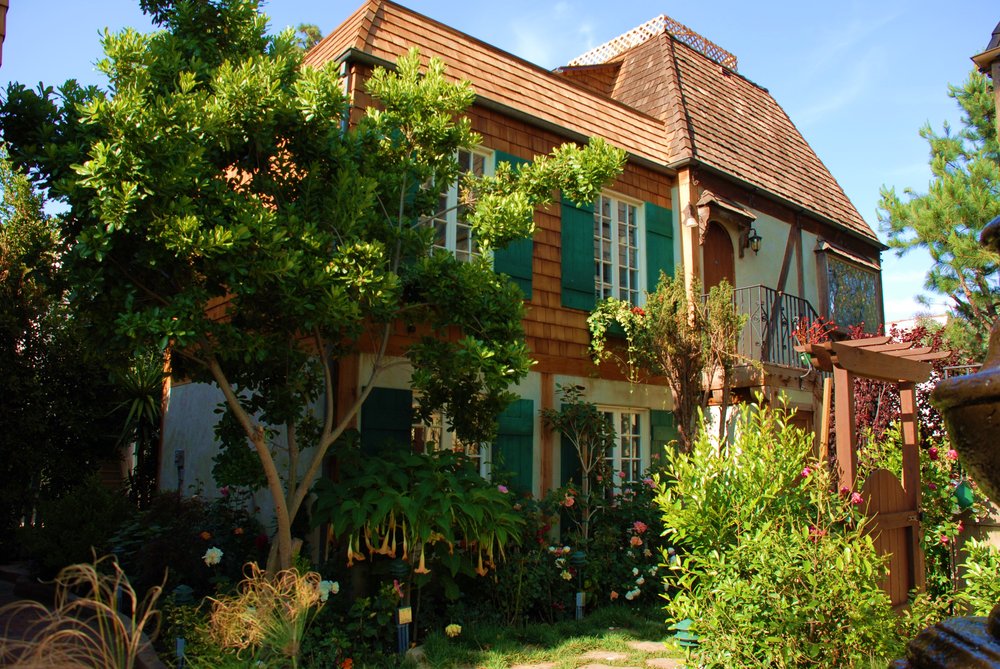By Bob Bishop
 Charlie Chaplin once owned this group of English-style bungalows at 819 N. Sweetzer Ave., known today as The Charlie, a boutique hotel. (Photo credit: Yelp.com)
Charlie Chaplin once owned this group of English-style bungalows at 819 N. Sweetzer Ave., known today as The Charlie, a boutique hotel. (Photo credit: Yelp.com)
California's population boom of the 1920s saw an influx of more than two million new residents attracted by bustling businesses in oil, agriculture and entertainment. More than half of those transplants settled in the Los Angeles area, doubling the number of people living here in just a few years.
The new arrivals in turn fueled a boom in housing construction, primarily for single-family homes that they preferred. Suburbs sprouted in vast open tracts of land on the fringes, leaving most newbies to endure long commutes to and from work on an ever-expanding electric streetcar system.
Charlie Chaplin had a different idea. After building Chaplin Studios in a Hollywood orange grove on North La Brea Avenue in 1917, he decided that motion picture production would be more efficient if actors and crews lived nearby.
With very few apartments or hotels in the neighborhood to house them, he began a building boom of his own that mirrored the growth of the movie industry specifically and Los Angeles overall.
Chaplin constructed three sets of courtyard-style cottages in the unincorporated community of West Hollywood from 1923 to 1931. Each cluster featured period revival styles of Tudor architecture that reminded him of his native England. Leading show business stars of the era lived in them at various times in their careers, along with studio crew members.
Something worked, because Chaplin proceeded to make some of his most memorable and successful movies including "The Gold Rush" (1925), "City Lights" (1931), "Modern Times" (1936) and "The Great Dictator" (1939).
Two cottage clusters, in fact, have been designated as cultural resources - or city landmarks - by West Hollywood because they "represent one of the best and broadest ranging collections of historic multi-family housing in the region," the city's website notes.
"These cottage clusters provided an intimate, low-density housing alternative to members of the motion picture industry, in close proximity to major studios," according to the city's website. Today they still serve as home to many in the entertainment business or creative crafts.
They are: Normandie Towers, 7219 Hampton Ave.; The Charlie hotel, 819 N. Sweetzer Ave., and Formosa Cottages (or Chaplin Court), 1328 N. Formosa Ave. They are not accessible to the general public. Taken as a group, they represent several more lasting marks Chaplin left on the city, in addition to his contributions as a comic genius, a pivotal star in the early days of Hollywood, and one of the greatest filmmakers in the history of American cinema.
Beginning with the year they were built, here's a profile of each of Chaplin's clusters of cottages...

